
Of all the succulents I grow, ghost plants are among the easiest and most remarkable. They are true survivors. Damaged stem? No problem. No water? The plant hunkers down and looks pretty much the same for months. Frost? It’s gotten down to 17 degrees in my garden, and the graptopetalums were fine.
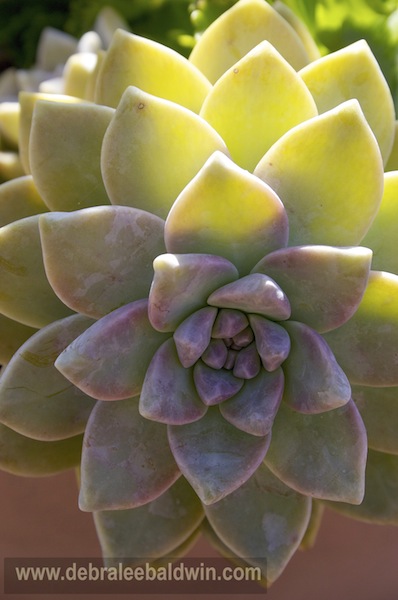
The common name ghost plant probably has to do with the look of the grayish white, opalescent leaves. The plants come not from Paraguay, as the species name implies, but Mexico. Graptopetalum rosettes resemble echeverias, to which they are related. Overlapping, rounded triangles of graptopetalum leaves form a Fibonacci spiral.
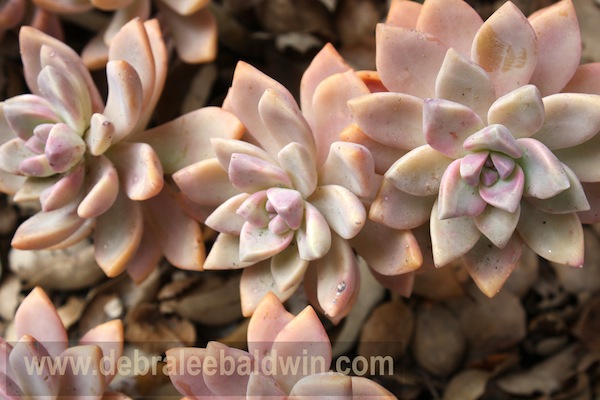
Graptopetalums are chameleons. Those grown in partial shade tend to be blue-gray; in full, hot sun, gray-pink; in full sun, pinkish gray to yellow.
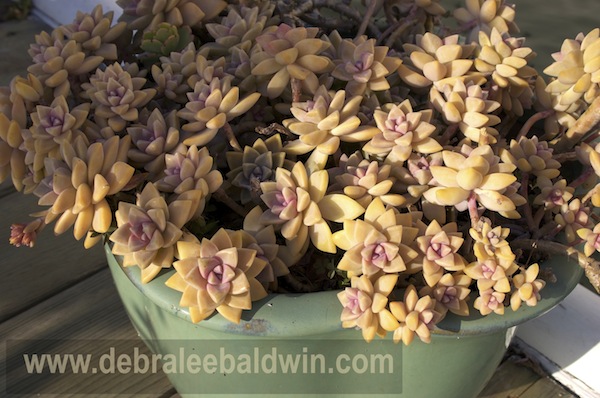
I have graptopetalums that look like different plants growing within ten feet of each other because of differences in sun exposure, quality of soil and amount of water.
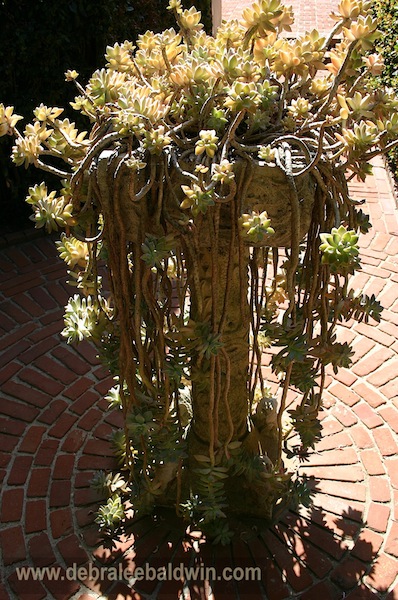
Rosettes grow at the tips of ever-lengthening stems that become pendant over time, so graptopetalums make good cascaders. The downside to graptopetalums, like many succulents, is that their old leaves wither and fall off. New growth is from the center of the rosette, so over time you get a denuded, awkwardly long stem with a rosette on the end. You can always snap it off and replant it, though. These (above) are at Lotusland in Santa Barbara, CA.
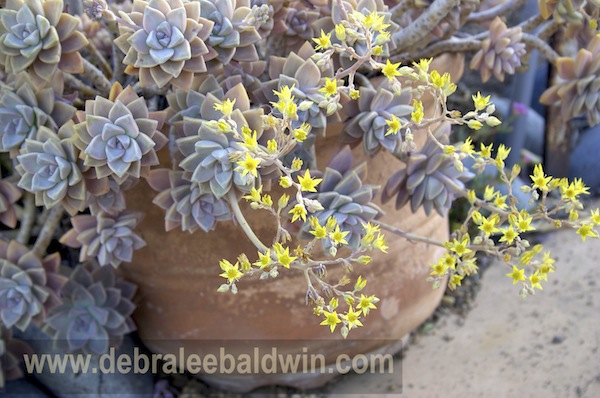
Graptopetalums bloom in spring, producing dainty sprays of star-shaped yellow flowers.
Handle with care; leaves of graptopetalums detach readily. I wince when I hear that little snap. All parts of the plant are fairly brittle because it wants to break apart and reroot.
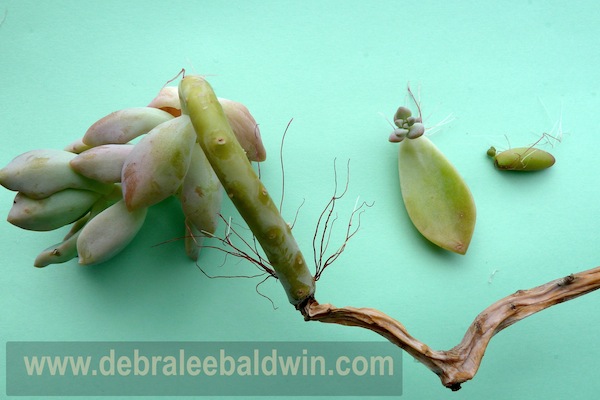
Because leaves and cuttings root effortlessly, graptopetalums are among the easiest succulents to propagate. Leaves that fall off and land on the ground below the mother plant may sprout beadlike leaves and threadlike roots from the stem end. These feed off the leaf, draining it of nutrients. As the tiny plant becomes established, the leaf shrivels.
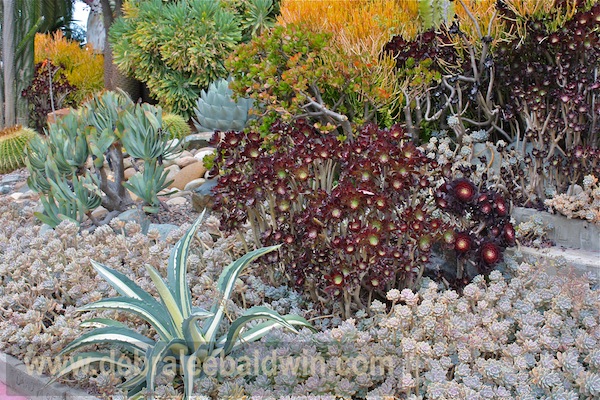
Graptopetalums also can be used as a ground cover. (But like all succulents, they can’t be walked on.) Above: Graptopetalums in a garden in San Diego, designed by Michael Buckner of The Plant Man nursery.

Graptopetalums may form crested growth—rosettes that form tight clusters (above). This vignette of low-growing drifts of succulents is at Waterwise Botanicals nursery in Escondido, CA. Top to bottom: ice plant (lampranthus), Crassula ‘Campfire’, crested Graptopetalum paraguayense and Sedum rubrotinctum ‘Pork and Beans’.

A wealthy Newport Beach, CA, floral designer ornamented his Art Nouveau home with cast-concrete graptopetalums. They’re his signature plant.
It’s too bad you’re not here right now; I have three boxes the size of large shoeboxes filled with graptopetalum cuttings, and I’m looking for someone to give them to. After you’ve grown Graptopetalum paraguayense for awhile, you too will have loads of it.
My goal is to share the beauty of waterwise, easy-care succulents in gardens, containers and landscapes via blog posts, newsletters, public speaking and workshops, photos, videos, merchandise, and social media (Facebook and Pinterest). My books: Designing with Succulents, Succulent Container Gardens, and Succulents Simplified. www.debraleebaldwin.com
